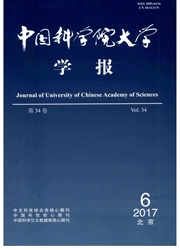

 中文摘要:
中文摘要:
使用遥控飞机搭载的光学粒子计数器与其他探空传感器,进行了近30天的连续观测,获得敦煌地面到约1000m高度气溶胶的分粒径级的数混合比,以及温度、相对湿度等参数的垂直分布数据.数据表明,近地层气溶胶在夜间的对流混合是影响其日间垂直分布变化的主要因素.细粒子(0.3μm〈d〈1.0μm,d为空气动力学直径)的数混合比的月平均夏季比春季高,而粗粒子(d〉1.0μm)则是夏季比春季低.粒径在2.0μm〈d〈5.0μm间的粒子在2002年整个春季都占相当比例.沙尘暴期间,粗粒子的数混合比上升,同时细粒子的数混合比轻度下降,粒子尺度谱上在0.5μm〈d〈1.0μm和2.0μm〈d〈5.0μm范围都有峰值.沙尘暴消退期间,不同粒径粒子的数混合比的消退率和消退速度各有不同,这很可能意味着沙尘起源的善鼻
 英文摘要:
英文摘要:
Vertical profiles of aerosol data and meteorological factor at Dunhunang in China were obtained by using observation instruments loaded in a remote-controlled airplane. The observations suggest that convective mixing of aerosols accumulated in the vicinity of the ground at nighttime is the main factor of diurnal variation of aerosol vertical distribution. Monthly-mean vertical distributions suggest that concentrations of fine particles and water vapor are higher in summer than in spring while those of coarse particles are lower in spring than in summer. During dust storms, number mixing ratio of coarse particles increased, while that of fine particles slightly decreased. The size distributions had two peaks. In the retreat periods of dust storms, the decreasing rates and speeds of number mixing ratios for the coarse and fine particles were different. These differences imply the different origins of the dust storms.
 同期刊论文项目
同期刊论文项目
 同项目期刊论文
同项目期刊论文
 期刊信息
期刊信息
